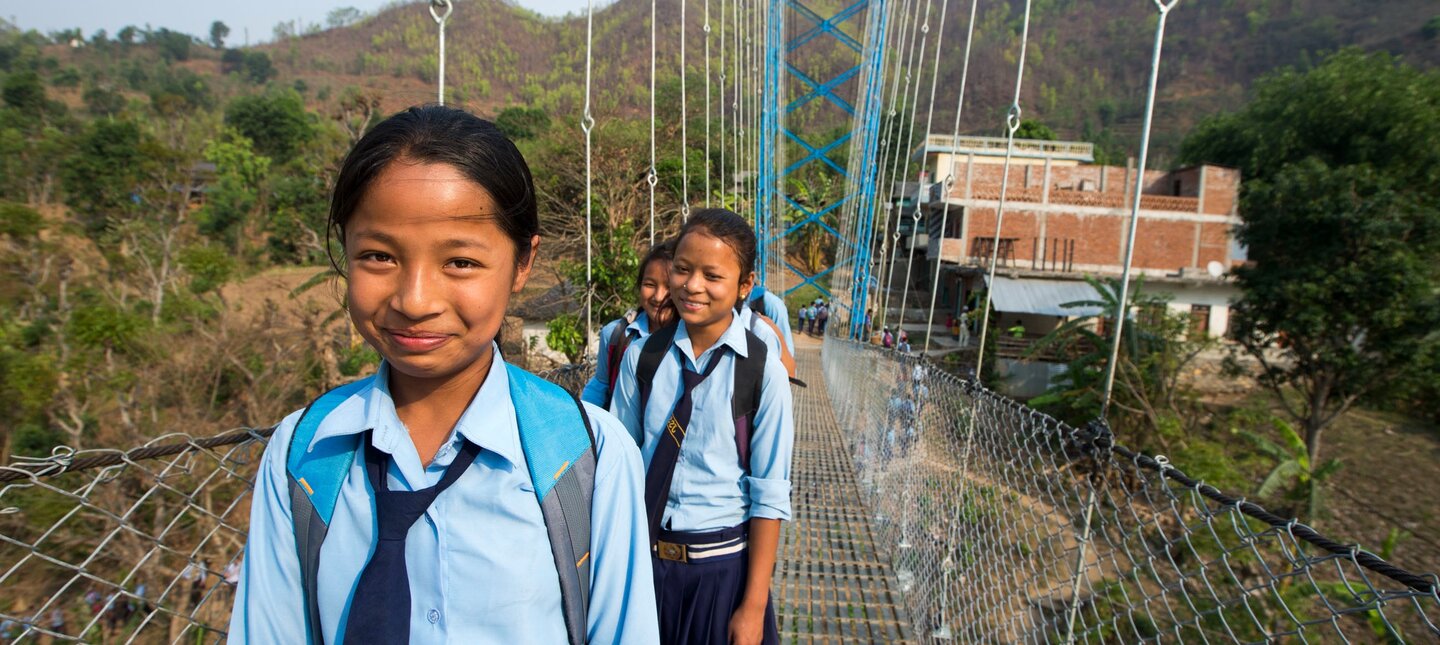- PROJECT NAMETrail Bridge Support Unit
- PROJECT PHASE2019 to 2023
- FUNDINGThis project is an SDC mandate.
- THEMATIC FOCUSBridges & Roads
begin quote from:
Over 8,000 real changes
Over 8,000 trail bridges have been built in Nepal – some two thirds of them through successive SDC projects, and all of them technically verified by Helvetas engineers on behalf of the Nepali government with the funding of SDC. Each of these bridges makes the routes used by an average 1,800 people shorter and safer. Following the construction of a new trail bridge, school attendance increases on average by 16%, and consultations at health centers go up 26%. In 20% of cases, new stores, snack bars and repair shops open up near the bridge.
Nepal’s trail bridges are a standout success in development cooperation. From early days when all construction aspects were overseen by Swiss engineers, Nepalese engineers are now fully in charge and are developing new designs for new needs. From the planning and implementation perspective, it is now the municipalities established back in 2018 that are fully in charge.
Initially, clear priority was given to connecting remote mountain settlements, but these days there are also demands for designs that suit lowland areas. Nepalese engineers are now also providing advice on trail bridge construction in other countries.
Working with the Government of Nepal, the Swiss Agency for Development and Cooperation (SDC) recently commissioned Helvetas to continue providing technical assistance to the national trail bridge program for another four years (December 2019 – November 2023). This assistance includes working with educational institutes in providing technical courses to engineers and technicians. Women engineers are especially encouraged through an SDC traineeship program implemented by Helvetas.
Trail bridges are more than mere infrastructure. From the beginning, the SDC and Helvetas approach was to foster community spirit, developing a participatory process of bridge construction and maintenance that has become a national government guideline. This guideline applies to all short span bridges (less than 120m long), which represent 90% of trail bridges in the country; only long, technically complex bridges are built by contractors.
For each short span bridge, a NGO partner organization works with TBSU staff to establish a bridge user group committee. This committee must include women and members of disadvantaged groups, who often have little or no say in other aspects of public life. The future bridge users discuss the bridge site, gain an understanding of basic technical issues, organize materials, and contribute hard days of labor (or the financial equivalent). In the process, they make the bridge their own.
Upon bridge completion, a public meeting is held to verify that it meets quality standards and that the funds have been used properly. In addition, a Bridge Warden (care taker) is appointed to oversee the operation and upkeep of the bridge. For many bridge users, having a voice in such processes has represented their very first experience of political participation. Which makes each trail bridge an opportunity for local democracy in practice.





No comments:
Post a Comment